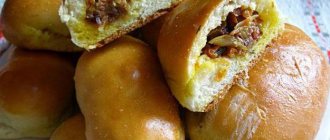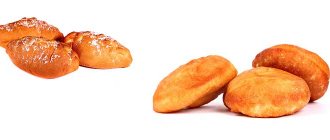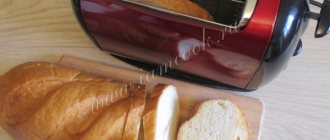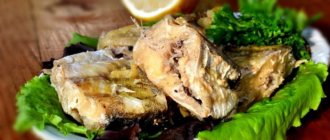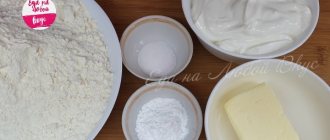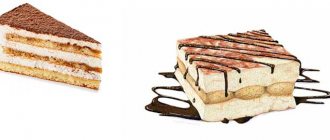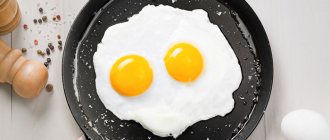Dietary properties:
What calorie content does a fried pie with onion and egg have, what dietary properties does it have, all this is of great interest to those who lead a healthy lifestyle and monitor their health and figure. So we will try to answer these questions in the following article.
So:
Uninformed people believe that onions come in only two varieties: green and onions. In fact, there are many species of this plant and even more varieties that differ in taste, habitat and ripening time. In addition to the onions already known to us, there are batun, leek, shallot, chives and others.
In central Russia, onions are most famous. It contains water, proteins, fiber, mineral salts, sugar (the amount may vary depending on the type of onion), vitamin C and essential oils, which give it that unique spicy taste.
It turns out that even onions are not as simple as it seems at first glance - they can be sweet, spicy and semi-sharp. Residents of central and northern Russia are accustomed to eating spicy and semi-sharp varieties.
Sweet varieties are most widespread in the south of the country, because in areas to the north they do not have time to ripen.
Both hot, semi-sharp, and sweet onions can be eaten fresh, dried, fried, boiled and pickled, however, the hot and semi-sharp varieties have certain advantages - they are stored fresh longer. Onions are also valued for the fact that both the bulbs themselves and the onion feathers can be eaten, unlike, for example, spring onions.
Recipe Pie with onion and egg, 1 pc. Calorie content, chemical composition and nutritional value.
Nutritional value and chemical composition of “Pie with onion and egg, 1 pc.”
The table shows the nutritional content (calories, proteins, fats, carbohydrates, vitamins and minerals) per 100 grams of edible portion.
| Nutrient | Quantity | Norm** | % of the norm in 100 g | % of the norm in 100 kcal | 100% normal |
| Calorie content | 317.3 kcal | 1684 kcal | 18.8% | 5.9% | 531 g |
| Squirrels | 9.8 g | 76 g | 12.9% | 4.1% | 776 g |
| Fats | 13.1 g | 56 g | 23.4% | 7.4% | 427 g |
| Carbohydrates | 40 g | 219 g | 18.3% | 5.8% | 548 g |
| Organic acids | 0.3 g | ~ | |||
| Alimentary fiber | 1.9 g | 20 g | 9.5% | 3% | 1053 g |
| Water | 33.8 g | 2273 g | 1.5% | 0.5% | 6725 g |
| Ash | 1.26 g | ~ | |||
| Vitamins | |||||
| Vitamin A, RE | 89.7 mcg | 900 mcg | 10% | 3.2% | 1003 g |
| Retinol | 0.067 mg | ~ | |||
| beta carotene | 0.148 mg | 5 mg | 3% | 0.9% | 3378 g |
| Vitamin B1, thiamine | 0.113 mg | 1.5 mg | 7.5% | 2.4% | 1327 g |
| Vitamin B2, riboflavin | 0.172 mg | 1.8 mg | 9.6% | 3% | 1047 g |
| Vitamin B4, choline | 100.42 mg | 500 mg | 20.1% | 6.3% | 498 g |
| Vitamin B5, pantothenic | 0.564 mg | 5 mg | 11.3% | 3.6% | 887 g |
| Vitamin B6, pyridoxine | 0.143 mg | 2 mg | 7.2% | 2.3% | 1399 g |
| Vitamin B9, folates | 17.431 mcg | 400 mcg | 4.4% | 1.4% | 2295 g |
| Vitamin B12, cobalamin | 0.229 mcg | 3 mcg | 7.6% | 2.4% | 1310 g |
| Vitamin C, ascorbic acid | 0.98 mg | 90 mg | 1.1% | 0.3% | 9184 g |
| Vitamin D, calciferol | 0.572 mcg | 10 mcg | 5.7% | 1.8% | 1748 g |
| Vitamin E, alpha tocopherol, TE | 2.098 mg | 15 mg | 14% | 4.4% | 715 g |
| Vitamin H, biotin | 6.99 mcg | 50 mcg | 14% | 4.4% | 715 g |
| Vitamin K, phylloquinone | 16.1 mcg | 120 mcg | 13.4% | 4.2% | 745 g |
| Vitamin RR, NE | 2.4869 mg | 20 mg | 12.4% | 3.9% | 804 g |
| Niacin | 0.726 mg | ~ | |||
| Macronutrients | |||||
| Potassium, K | 148.21 mg | 2500 mg | 5.9% | 1.9% | 1687 g |
| Calcium, Ca | 59.79 mg | 1000 mg | 6% | 1.9% | 1673 g |
| Silicon, Si | 2.356 mg | 30 mg | 7.9% | 2.5% | 1273 g |
| Magnesium, Mg | 15.85 mg | 400 mg | 4% | 1.3% | 2524 g |
| Sodium, Na | 235.36 mg | 1300 mg | 18.1% | 5.7% | 552 g |
| Sera, S | 92.72 mg | 1000 mg | 9.3% | 2.9% | 1079 g |
| Phosphorus, P | 116.7 mg | 800 mg | 14.6% | 4.6% | 686 g |
| Chlorine, Cl | 365.27 mg | 2300 mg | 15.9% | 5% | 630 g |
| Microelements | |||||
| Aluminium, Al | 577.6 mcg | ~ | |||
| Bor, B | 32.4 mcg | ~ | |||
| Vanadium, V | 46.87 mcg | ~ | |||
| Iron, Fe | 1.4 mg | 18 mg | 7.8% | 2.5% | 1286 g |
| Yod, I | 7.99 mcg | 150 mcg | 5.3% | 1.7% | 1877 |
| Cobalt, Co | 4.112 mcg | 10 mcg | 41.1% | 13% | 243 g |
| Lithium, Li | 0.365 mcg | ~ | |||
| Manganese, Mn | 0.3146 mg | 2 mg | 15.7% | 4.9% | 636 g |
| Copper, Cu | 82.05 mcg | 1000 mcg | 8.2% | 2.6% | 1219 g |
| Molybdenum, Mo | 10.818 mcg | 70 mcg | 15.5% | 4.9% | 647 g |
| Nickel, Ni | 1.269 mcg | ~ | |||
| Tin, Sn | 5.56 mcg | ~ | |||
| Rubidium, Rb | 27.5 mcg | ~ | |||
| Selenium, Se | 11.639 mcg | 55 mcg | 21.2% | 6.7% | 473 g |
| Strontium, Sr | 5.3 mcg | ~ | |||
| Titanium, Ti | 5.65 mcg | ~ | |||
| Fluorine, F | 34.14 mcg | 4000 mcg | 0.9% | 0.3% | 11716 g |
| Chromium, Cr | 2.84 mcg | 50 mcg | 5.7% | 1.8% | 1761 |
| Zinc, Zn | 0.7557 mg | 12 mg | 6.3% | 2% | 1588 g |
| Digestible carbohydrates | |||||
| Starch and dextrins | 34.853 g | ~ | |||
| Mono- and disaccharides (sugars) | 4.6 g | max 100 g | |||
| Essential amino acids | |||||
| Arginine* | 0.051 g | ~ | |||
| Valin | 0.05 g | ~ | |||
| Histidine* | 0.022 g | ~ | |||
| Isoleucine | 0.039 g | ~ | |||
| Leucine | 0.07 g | ~ | |||
| Lysine | 0.058 g | ~ | |||
| Methionine | 0.027 g | ~ | |||
| Methionine + Cysteine | 0.047 g | ~ | |||
| Threonine | 0.039 g | ~ | |||
| Tryptophan | 0.013 g | ~ | |||
| Phenylalanine | 0.042 g | ~ | |||
| Phenylalanine+Tyrosine | 0.074 g | ~ | |||
| Nonessential amino acids | |||||
| Alanin | 0.046 g | ~ | |||
| Aspartic acid | 0.08 g | ~ | |||
| Glycine | 0.027 g | ~ | |||
| Glutamic acid | 0.115 g | ~ | |||
| Proline | 0.026 g | ~ | |||
| Serin | 0.06 g | ~ | |||
| Tyrosine | 0.031 g | ~ | |||
| Cysteine | 0.019 g | ~ | |||
| Sterols (sterols) | |||||
| Cholesterol | 144.66 mg | max 300 mg | |||
| beta sitosterol | 9.199 mg | ~ | |||
| Saturated fatty acids | |||||
| Saturated fatty acids | 2.5 g | max 18.7 g | |||
| 14:0 Miristinovaya | 0.003 g | ~ | |||
| 15:0 Pentadecane | 0.001 g | ~ | |||
| 16:0 Palmitinaya | 1.32 g | ~ | |||
| 17:0 Margarine | 0.002 g | ~ | |||
| 18:0 Stearic | 0.287 g | ~ | |||
| 20:0 Arakhinovaya | 0.08 g | ~ | |||
| Monounsaturated fatty acids | 7.326 g | min 16.8 g | 43.6% | 13.7% | |
| 16:1 Palmitoleic | 0.168 g | ~ | |||
| 17:1 Heptadecene | 0.001 g | ~ | |||
| 18:1 Oleic (omega-9) | 6.236 g | ~ | |||
| 20:1 Gadoleic (omega-9) | 0.049 g | ~ | |||
| Polyunsaturated fatty acids | 1.574 g | from 11.2 to 20.6 g | 14.1% | 4.4% | |
| 18:2 Linolevaya | 1.175 g | ~ | |||
| 18:3 Linolenic | 0.004 g | ~ | |||
| 20:4 Arachidonic | 0.007 g | ~ | |||
| Omega-6 fatty acids | 1.7 g | from 4.7 to 16.8 g | 36.2% | 11.4% |
Energy value Pie with onion and egg, 1 pc. is 317.3 kcal.
- Serving = 41 g (130.1 kcal)
Primary Source: Created in the application by the user. Read more.
** This table shows the average levels of vitamins and minerals for an adult. If you want to know the norms taking into account your gender, age and other factors, then use the “My Healthy Diet” application.
Beneficial features
The calorie content of yeast pies depends on how they are prepared. Fried foods absorb oil during cooking, which increases the number of calories and creates additional stress on the stomach.
But baked pies, on the contrary, have a number of useful properties:
- Carbohydrates broken down during the digestion of baked dough provide the body with the necessary energy. This is especially useful for people with heavy physical activity.
- Yeast sticks do not die during baking and help normalize digestion.
Pies and diet
During the period of weight correction, it is recommended to give preference to baked goods made from yeast-free dough filled with vegetables and a light side dish: of all those presented in the tables, they are the least high in calories. For example, when eating a small pie with cabbage, sorrel, egg and onion, the body will receive about 150-170 kcal - this should be the average snack between lunch and dinner. The BJU indicator in such dishes is close to the norm: the vegetables in the fillings are rich in fiber, vitamins and amino acids. This light, low-fat food is well absorbed by the body and nourishes it.
The heaviest are fried products with meat, mushrooms, fish and rice. You should avoid such dishes during a diet, because the oils and simple carbohydrates in their composition do not saturate the body, but are deposited on the body in the form of fat.
Delicious and healthy dietary dishes from cauliflower - step-by-step recipes
Homemade baking is healthier, so it is recommended to make diet pies yourself. When preparing a dish in this way, it is convenient to control its composition, saturation with proteins, fats and carbohydrates, which is important when losing weight.
Some cooking tips:
- Way.
The diet excludes foods fried in oil. Therefore, the dish must be cooked in the oven. If necessary, the filling is pre-steamed or boiled (in the case of meat and vegetables). - Flour.
The coarsely ground product contains all the components of the grain, and therefore retains its biological value for the human body.
The calorie content of bran and rye flour is lower than that of wheat. - Filling.
It should include fresh natural products. You should avoid animal meat and frozen semi-finished products. It is recommended to give preference to poultry: chicken or turkey fillets are easily digestible foods rich in dietary fiber and protein. You can supplement the composition with different types of greens, tomatoes, bell peppers and cheese. Makes a very nutritious and healthy snack. - Spices.
Salt and pepper should be used to a minimum, and herbs and spices should be completely excluded from the recipe. Spicy and salty foods make you want to take more, while bland foods make you feel full right away.
It is important to consume pies prepared at home before 16:00, so that by the time you go to bed, the food has time to be digested and properly absorbed. Snacks eaten after this time will create an unpleasant heaviness in the stomach, and later manifest themselves in the form of fatty deposits.
It's hard to find a person who doesn't like pies. Despite their considerable calorie content, pies are a very popular dish.
– they are nourishing, tasty, aromatic, and among the variety of types of dough and fillings, everyone will find the most delicious combination for themselves.
How many calories are in pies depends on several factors: the dough from which they were made, the method of preparing them and the filling. Pie dough can be yeast, yeast-free, puff pastry, it can be made from wheat, oatmeal, rye, rice, corn flour, etc. The calorie content in pies made from yeast dough is higher than those made without yeast; pies made from rye flour contain much fewer calories than those made from wheat.
The pies can be cooked in the oven or fried in oil. The calorie content of fried pies is significantly higher than the calorie content of baked pies, since the calorie content of the oil in which they are fried is added to their own calorie content. Such pies are not advisable for those who have problems with the liver, pancreas or biliary tract, as well as those who are overweight. If baked pies are still acceptable to eat during a diet, then fried pies should be categorically excluded from the diet.
And, of course, the calorie content of pies depends on their filling.
. The calorie content of pies with cabbage will be much less than the calorie content of pies with potatoes, and they, in turn, will be less calorie than meat pies or pies with sweet fillings.
Calorie content of egg pie
Speaking about the calorie content of a pie with an egg, one cannot help but say that it also depends on the type of dough. But you can reduce the calorie content of the egg pie by using low-fat milk and durum wheat flour for the dough.
It should also be said that the calorie content of a pie with an egg fried in a frying pan will be several times higher than the calorie content of a pie with an egg baked in the oven. Thus, the calorie content of a baked pie is only 240 kcal per hundred grams of product, and the calorie content of a fried pie in a frying pan is 340 kcal per hundred grams of product. As you can see, the difference in calories is large.
Calorie content of baked pies (per 100 g):
- Calorie content of pies with cabbage - 214 kcal
- Calorie content of pies with potatoes - 235 kcal
- Calorie content of pies with egg - 204 kcal
- Calorie content of meat pies - 256 kcal
- Calorie content of pies with mushrooms - 192 kcal
- Calorie content of fish pies - 180 kcal
- Calorie content of apple pies - 177 kcal
- Calorie content of pies with cottage cheese - 209 kcal
- Calorie content of pies with jam - 240 kcal
Calorie content of fried pies (per 100 g):
- Calorie content of pies with cabbage - 263 kcal
- Calorie content of pies with potatoes - 276 kcal
- Calorie content of pies with egg - 260 kcal
- Calorie content of meat pies - 342 kcal
- Calorie content of pies with mushrooms -226 kcal
- Calorie content of fish pies - 215 kcal
- Calorie content of apple pies - 205 kcal
- Calorie content of pies with cottage cheese - 217 kcal
- Calorie content of pies with jam - 289 kcal
Calorie content of different types of pies
In order for you to control the amount of calories you consume, we suggest that you check the calorie content of pies in the following table.
Calorie content of a cabbage pie weighing 75 g (hereinafter the calorie content will be indicated for one pie weighing 75 g):
- baked – 130 kcal;
- fried – 220 kcal.
Calorie content of sorrel pie:
- baked – 140 kcal;
- fried – 200 kcal.
Calorie content of potato pie:
- baked – 150 kcal;
- fried – 240 kcal.
Calorie content of pie with egg and onion:
- baked – 150 kcal;
- fried – 170 kcal.
Calorie content of mushroom pie:
- baked – 192 kcal;
- fried – 230 kcal.
Calorie content of sweet pies:
- baked with cherries – 197 kcal;
- baked with apple – 199 kcal;
- baked with cottage cheese – 205 kcal;
- fried with jam – 264 kcal.
Calorie content of meat pie:
- baked – 204 kcal;
- fried – 246 kcal;
- whiting (weighing 150 g) – 626 kcal.
Calorie content of other savory pies:
- with fried fish – 203 kcal;
- with baked chicken – 217 kcal;
- with rice and fried egg – 232 kcal.
Is it possible to eat pies on a diet?
No matter how appetizing and fragrant the pies may look, we must admit that this is not a product that helps you lose weight.
Even if you choose a baked pie with a dietary filling, its calorie content will still be high due to the presence of dough.
Therefore, if you control the carbohydrates, proteins and fats you consume, it is better not to even look in the direction of pies - this is far from a dietary dish.
If you just stick to proper nutrition, there will be nothing wrong if you treat yourself to one egg pie once a week.
The materials posted on this page are informational in nature and intended for educational purposes. Site visitors should not use them as medical advice. Determining the diagnosis and choosing a treatment method remains the exclusive prerogative of your attending physician.
Similar articles
Potatoes are a healthy vegetable that came to Europe and America at the end of the sixteenth century. It is worth noting that initially it was considered dangerous to health and...
Dried apricot is a dried apricot that retains most of the beneficial properties of the fresh fruit. Dried fruit is valued for its high content of microelements and…
Almost every one of us loves sweets. One of the simplest and most delicious desserts is cookies, a popular treat among adults and children. But, like all sweets,...
Russian cuisine is rich in an abundance of delicious dishes, because it is not without reason that foreigners come to Russia to enjoy overseas delicacies. One of the well-known...
Pirozhki is a traditional Russian dish, a flour product whose main components are a dough shell and a fruit/vegetable/meat filling. It can be made from puff pastry, yeast-free and yeast dough made from different types of flour and grinding. The energy value also depends on the type of filling and method of preparation. Calorie tables will help you easily determine how many calories are in a particular type of pie.
WEIGHT LOSS STORIES OF STARS!
Irina Pegova shocked everyone with her weight loss recipe:
“I lost 27 kg and continue to lose weight, I just brew it at night...” Read more >>
